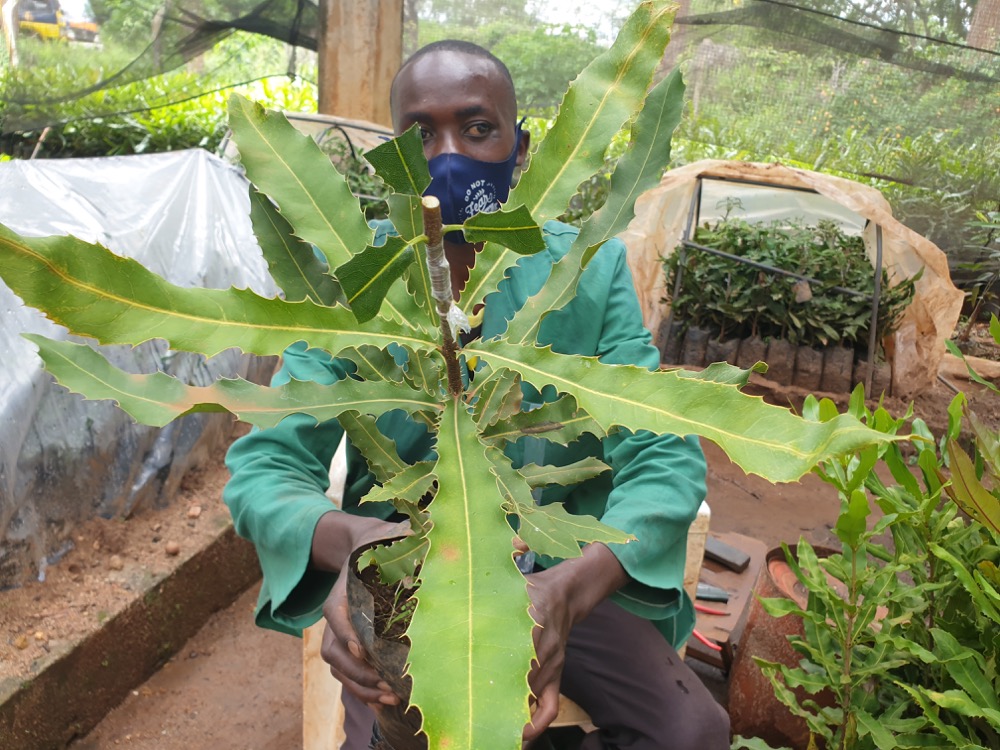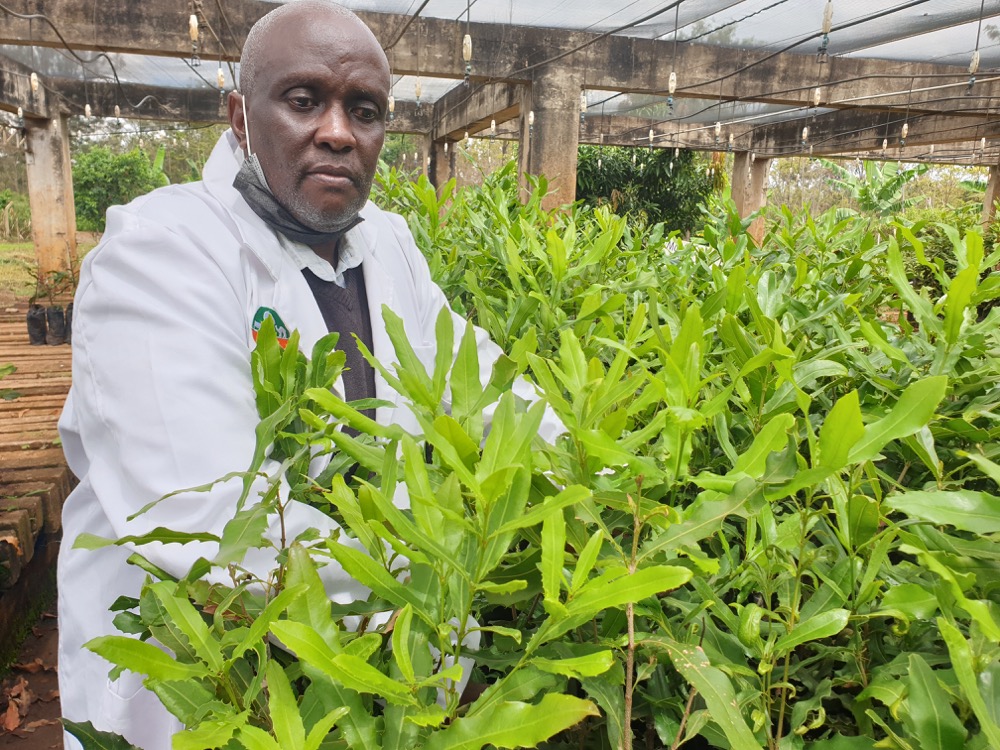Clean Planting Material: A Focus on Macadamia

On a chilly morning along the Thika Kandara road is the Kenya Agricultural and Livestock Research Organisation (KALRO) – run Practical Training Center.
From the roadside, are well constricted story buildings and a well compound characterized by well manicured ornamental plants and grass.
It is until you go past these buildings that you actually discover that there is more than meets the eye.
On this day, our team are here to find out about the importance of clean planting material as well as the process of grafting macadamia plants.
We meet Anthony Nyaga, a Research Scientist, who readily explains to us what clean planting materials are, and the benefits that come with the same.
“Clean planting material is one which farmers are guaranteed that it is free from pests and diseases, and highly resilient to the same, as well as to harsh weather conditions,” explains Nyaga
With such, he adds, farmers are assured that their crop will not fail and will therefore reap the benefits of their investment.
Notes Nyaga, “Unless the farmers are assured that the seedlings they plant will be resistant, they are likely to be demotivated,”
The KALRO macadamia varieties, Nyaga explains, starts yielding at three years and yield between 50-75 kilograms at an optimum age of 15 years, unlike the indigenous varieties, which start fruiting at 10 years and give an annual maximum yield of 10 kilograms.

Additionally, the rootsrocks are tolerant to phytopthora root rot, a soil-borne fungal disease, while the varieties have high oil content, and less sugar, making them unattractive to macadamia sting bug.
The process of making grafted macadamia is not for the faint-hearted, but for the patient and resislient. It takes about 15-18 months to finally get seedlings, ready for planting.
“We start by soaking mature macadamia nuts in water for 72 hours,” explains Nyaga, adding, “However, the water has to be changed every 24 hours to prevent the process of fermentation,”
She seeds are them planted in sand. The choice of sand is informed by the fact that sand is free from pests and diseases, allows high tempereature, thus accelerates the process of cracking and easy to transplant the plantlets once they germinate, a process that takes about 21 days.
The plantlets are then put in potting bags and then under shade which resemble mini greenhouses, for three months.
They are then let to grow in the open for 6-12 months, so that the root stalk can develop well. A mature root stalk, which is ready for grafting has a height of about six inches and a pencil-size thickness of the stem, where grafting will take place.
The most common grafting process, Nyaga says, is cut and incision, whereby the rootstock is cut, and a scion is joined through an incision.
After grafting, the plant is left for 3-4 months under a shade net, after which it is ready for final planting.
There are four main macadamia varieties whose seedlings are produced here. The MRG20 thrives in areas where sunflower and cotton are grown whole KGG15 and EMB1 thrive in areas with high rainfall, where coffee does well. On the other hand, KMB3 is considered a hybrid variety as it does well in areas where both coffee and tea thrive.
While KALRO’s focus is mainly research, the end products and knowledge are passed on to commercial nurseries, who should then provide farmers with clean planting materials.
Nyaga says MARKUP will work with MARKUP Kenya to upscale the technology that KALRO has developed, and make it easily available and accessible to farmers. For macadamia, the program will focus on Embu and Bungoma counties.
Additionally, MARKUP Kenya will upscale extension services to facilitated knowledge right at the farms.
Besides focusing on planting materials for macadamia, MARKUP Kenya will also work with KALRO, and other partners in government and private sector, to promote clean planting materials for passion fruits and groundnuts.
